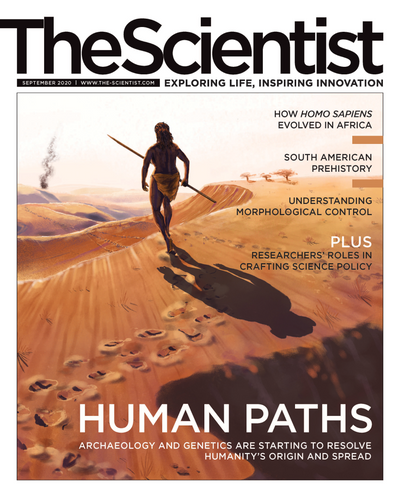ABOVE: Pathogenic bacteria such as Staphylococcus epidermidis, shown here, are more likely to emerge in wounds in which the diversity of other microbes is low.
© ISTOCK.COM, KSASS
EDITOR’S CHOICE IN GENETICS & GENOMICS
The paper
C. Tipton et al., “Patient genetics is linked to chronic wound microbiome composition and healing,” PLOS Pathog, 16:e1008511, 2020.
How quickly scrapes, cuts, and gashes in the skin heal can vary greatly depending on a person’s body mass, age, and whether the individual suffers from certain chronic conditions such as diabetes. Genetics, a new study suggests, may also play a role, with variations in two specific genes lowering the diversity of a wound’s microbiome and lengthening healing time.
Through a partnership with Southwest Regional Wound Care Center in Lubbock, Texas, geneticist Caleb Phillips at Texas Tech University and colleagues gained access to 85 patients’ DNA samples. Analyzing each person’s sample and...
How quickly scrapes, cuts, and gashes in the skin heal can vary greatly depending on a person’s body mass, age, and whether the individual suffers from certain chronic conditions such as diabetes. Genetics, a new study suggests, may also play a role, with variations in two specific genes lowering the diversity of a wound’s microbiome and lengthening healing time.
Through a partnership with Southwest Regional Wound Care Center in Lubbock, Texas, geneticist Caleb Phillips at Texas Tech University and colleagues gained access to 85 patients’ DNA samples. Analyzing each person’s sample and comparing it to the diversity of bacteria in the patient’s infected wound, the team found that individuals with specific single nucleotide polymorphisms (SNPs) in TLN2, a gene involved in actin assembly, and ZNF521, which encodes a transcription factor, had lower overall microbial diversity in their wounds and were much more likely to suffer from Pseudomonas and Staphylococcus infections. Those patients’ skin injuries were also much slower to heal, suggesting that individuals with these specific TLN2 and ZNF521 mutations may be at higher risk of developing chronic wounds.
Despite the “modest sample size,” Phillips says, the study offers a better understanding of what makes a patient vulnerable to chronic wounds. The SNPs the team described in TLN2 and ZNF521 could serve as biomarkers to identify patients at risk for slow wound recovery, he notes.
The extent of the microbiome’s role in chronic wounds is “a really big question in the field of healing and repair,” notes Lindsay Kalan, a medical microbiologist and immunologist at the University of Wisconsin–Madison who was not involved in the study. While the paper’s results are “not immediately translatable” for patient care, she says, it is “definitely a step in the right direction.”
Interested in reading more?







